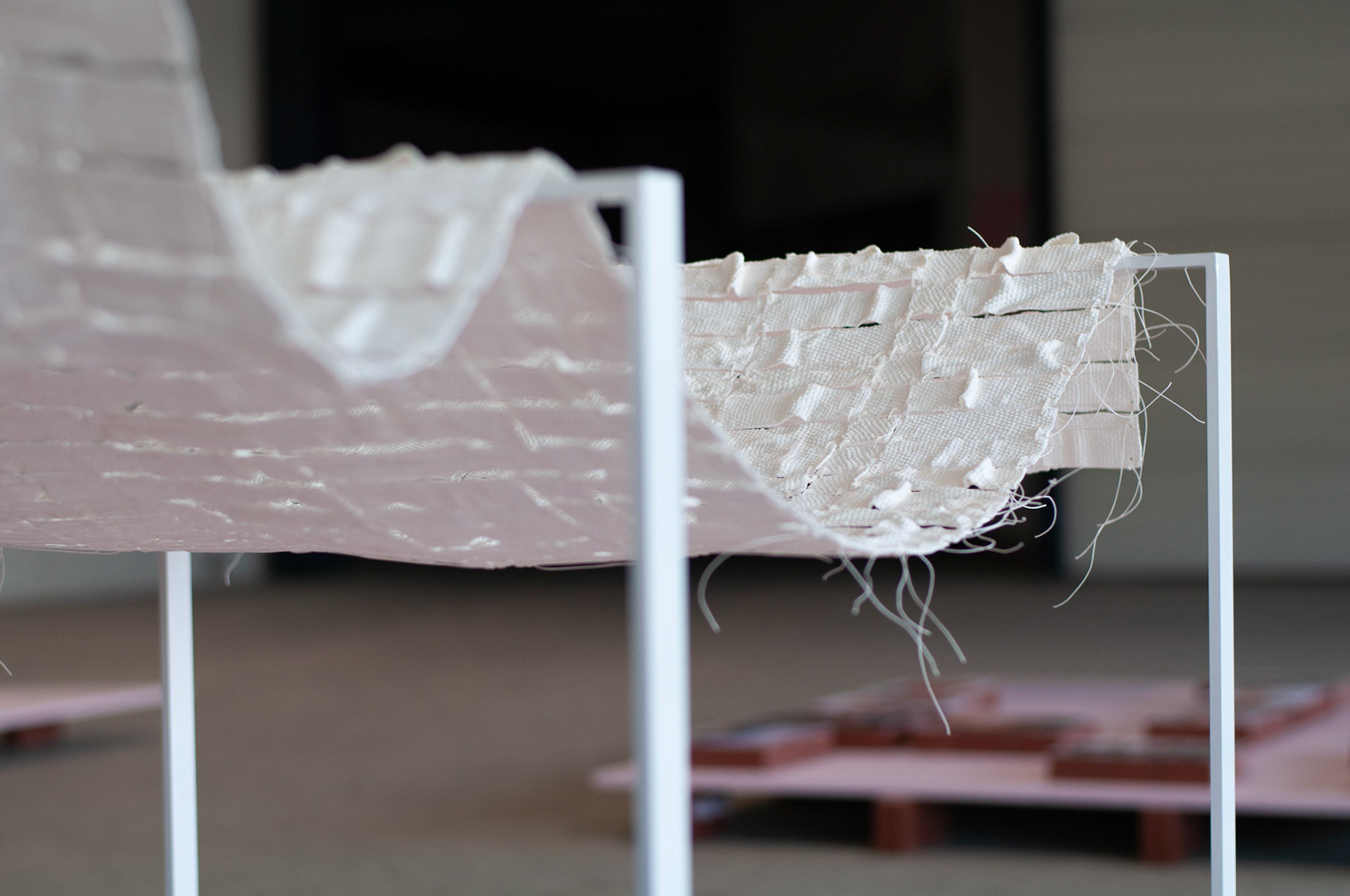WOVEN SPACES
Gottfried Semper defined the knot as a basic human technology and strongly believed that architecture has its origins in a practice of weaving. Just as clothing protected human from the elements, he argued that fabrics, as the means of spatial partitioning, created the first enclosure. (Fischer, 2010) Woven Spaces is an empirical research which explores the relationship between textility and architecture.
Five meters of hand-crafted cloth was cut into pieces, dipped in liquid porcelain and fired at a high temperature - 1260°C. In this inversion casting process, the weave is a "positive form" that burns out during the firing and finally, evaporates as a “lost casting”. At the same time, the porcelain hardens and acquires the shape of the fabric which seems like a fragile image frozen in eternity.
In the next stage, originating from a seamless woven textile, 700 individual tiles were sawn together to construct an imitation of the initial form. Through that, the porcelain cloth becomes a memory of its former self and provides a tangible link to the past by offering an insight into the previous conditions of the material.
Project awarded in Techtextil Student Competition “Textile Structures for New Building 2019”.
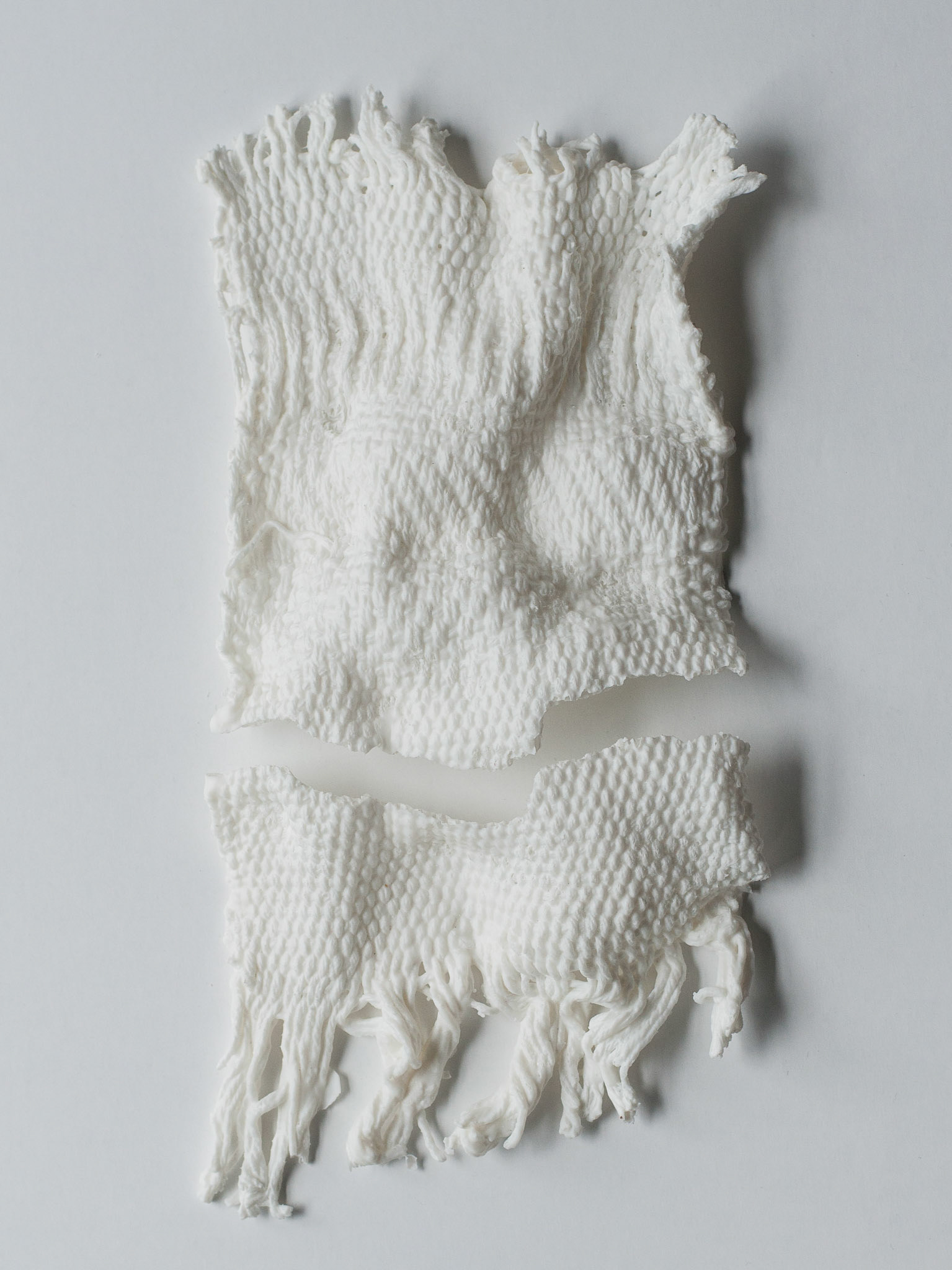
Porcelain. Woven with cotton on cotton, not glazed, fired once, 1260°C
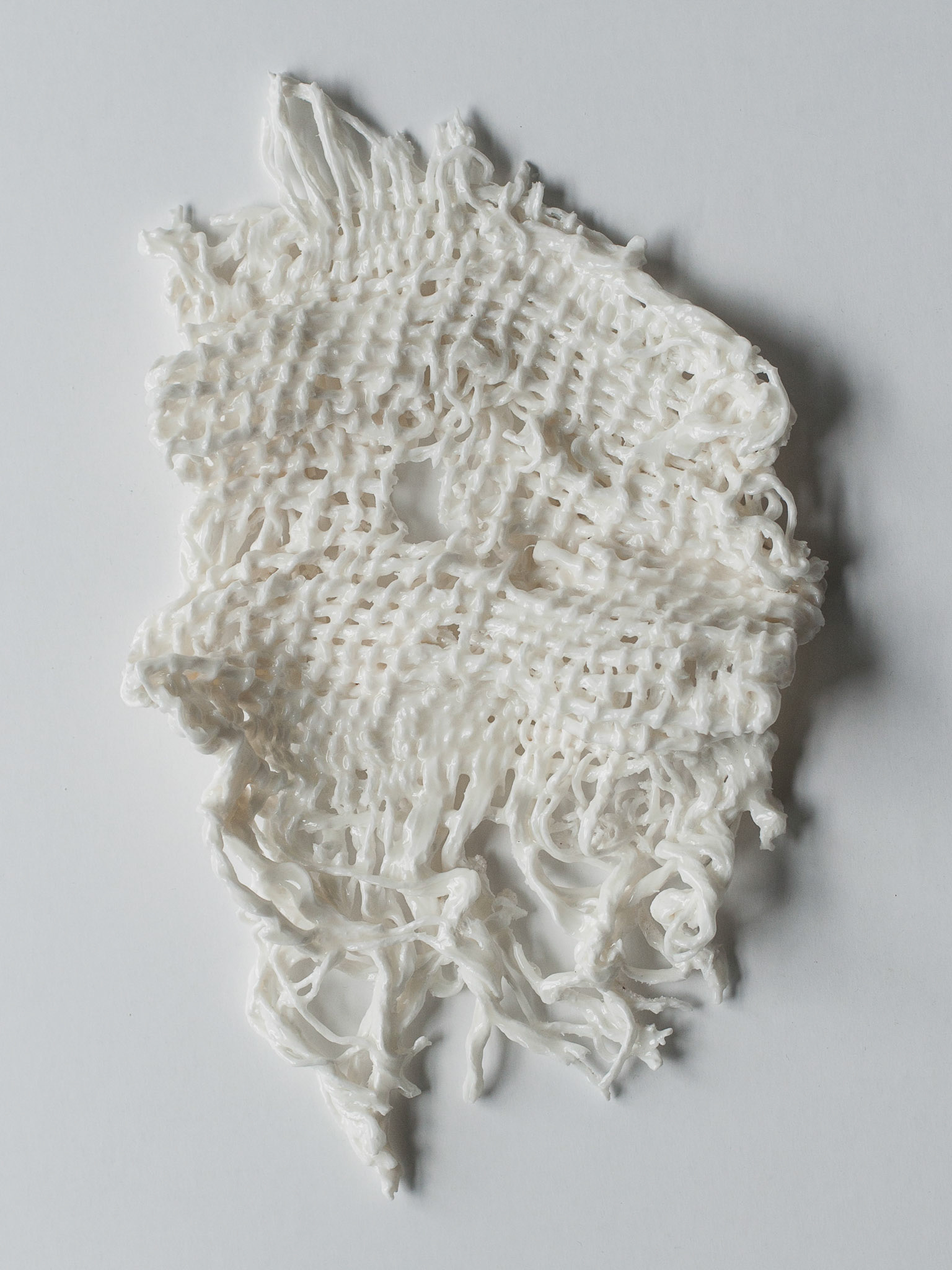
Porcelain. Woven with burlap on cotton, glazed, fired twice, 960°C, 1260°C
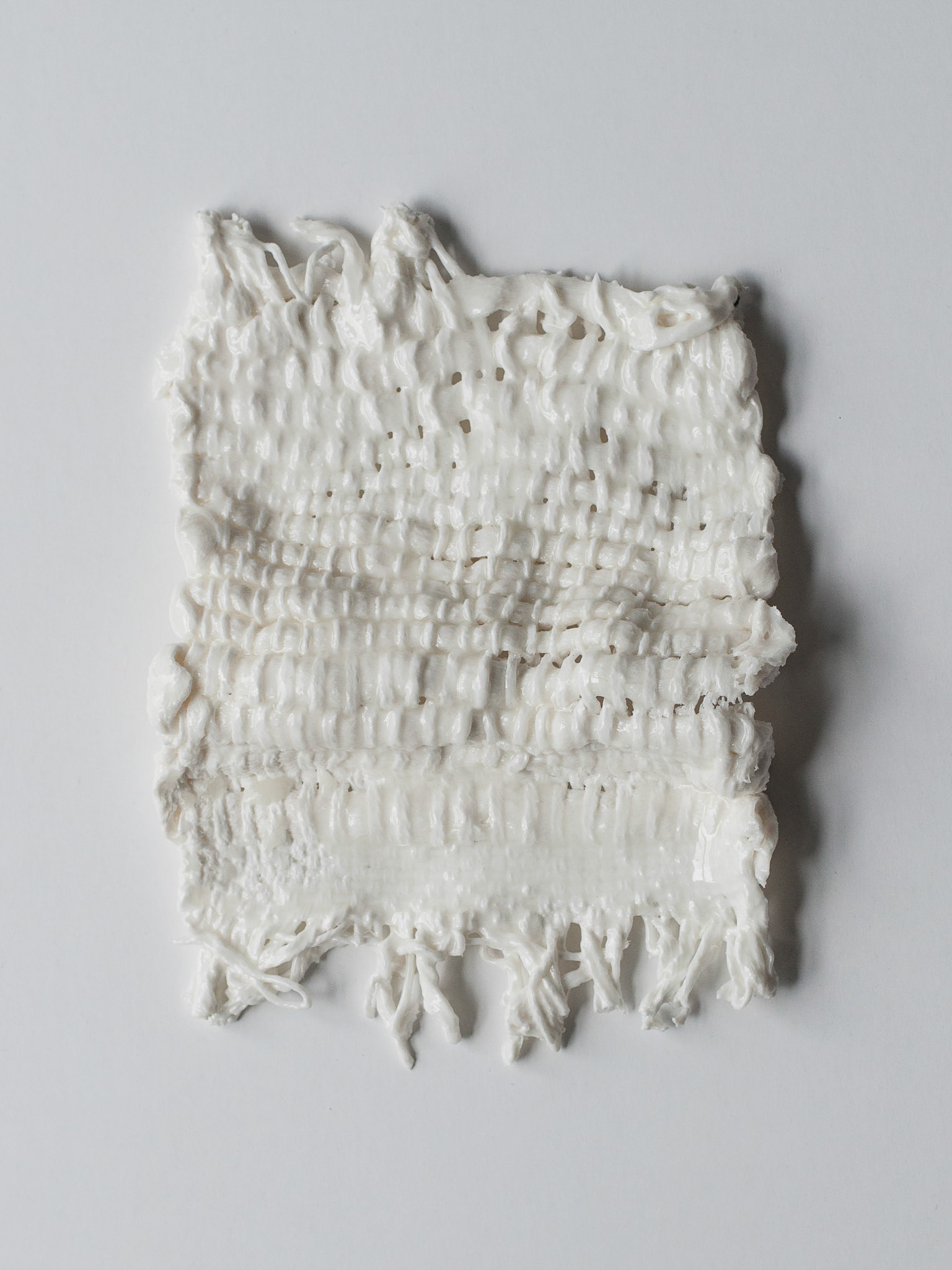
Porcelain. Woven with wool on cotton, glazed, fired twice, 960°C, 1260°C
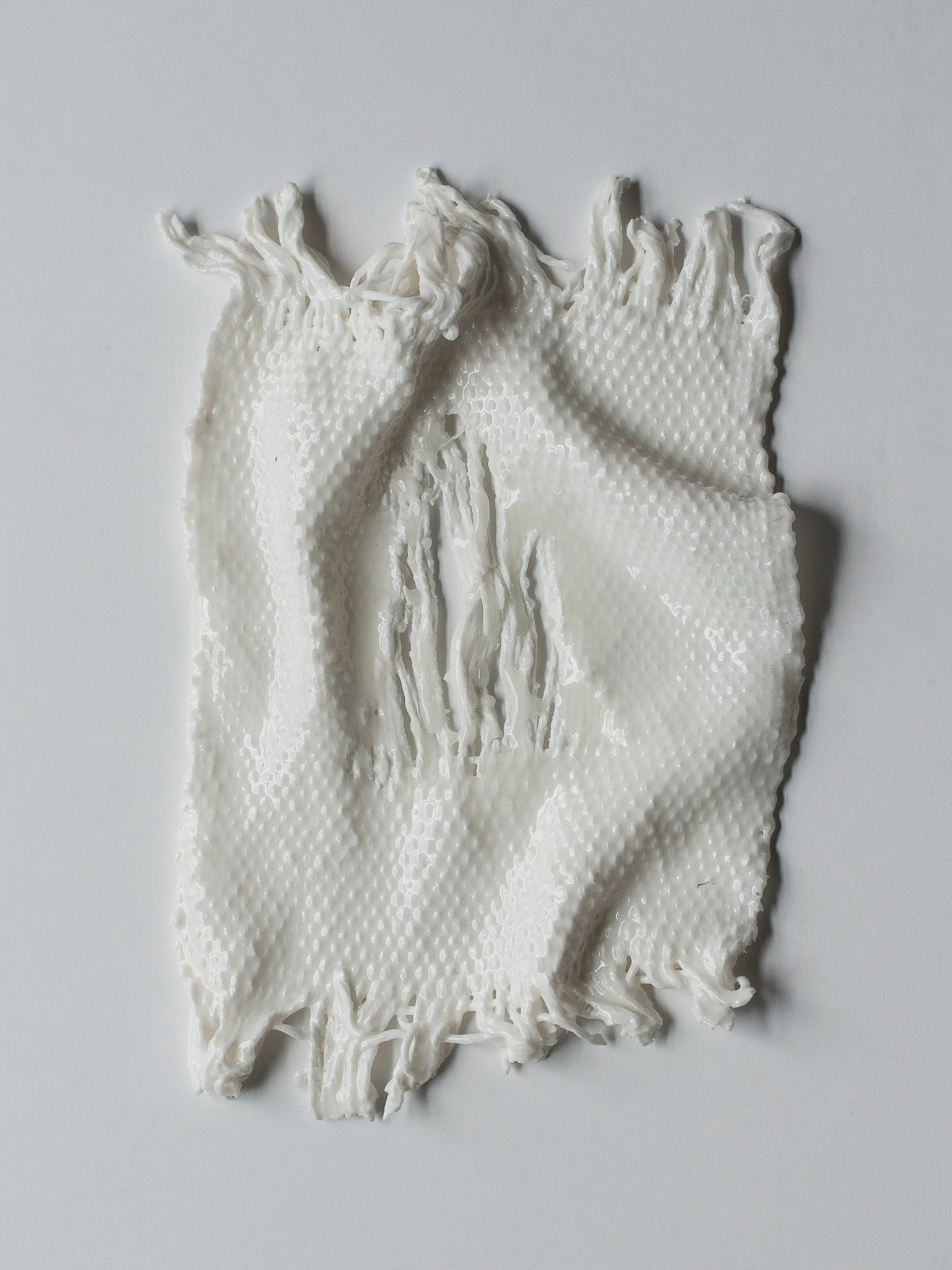
Porcelain. Woven with cotton on cotton, glazed, fired twice, 960°C, 1260°C
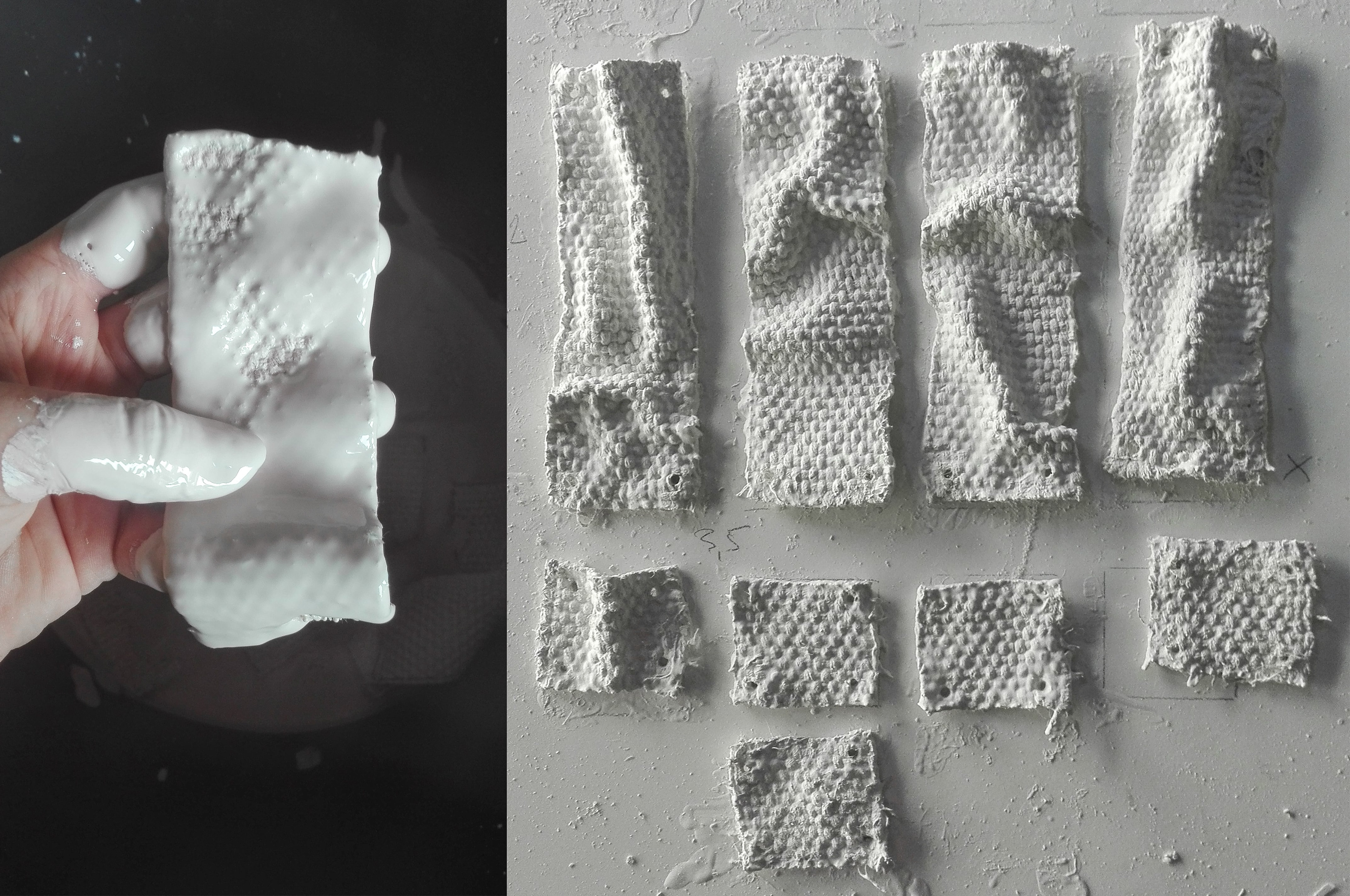
Each of the pieces was carefully dipped in the porcelain slip, dried and fired at a high temperature 1260°C.
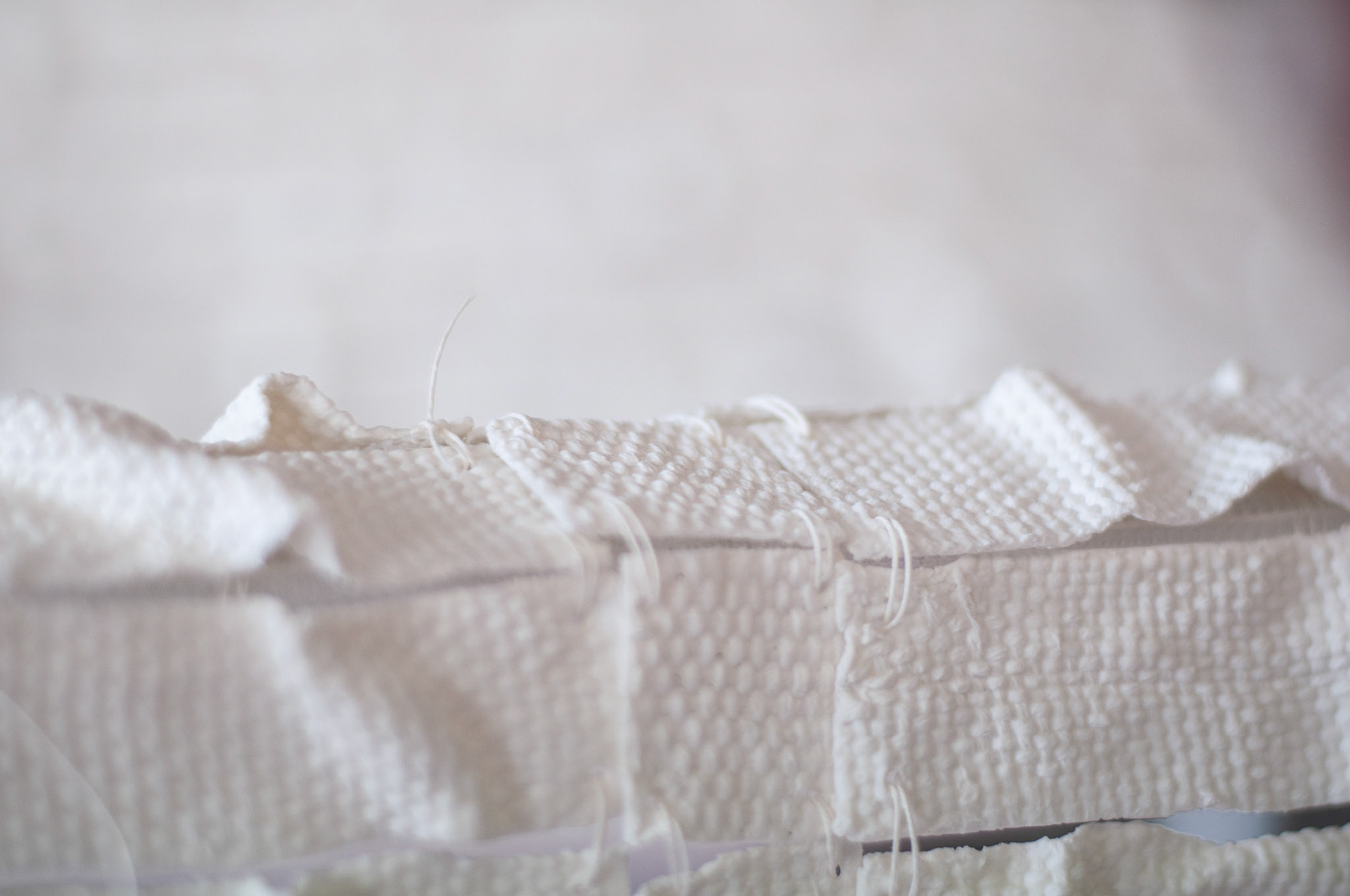
A cotton binding thread coated with wax yields strength which withstands the pressure and the test of time.
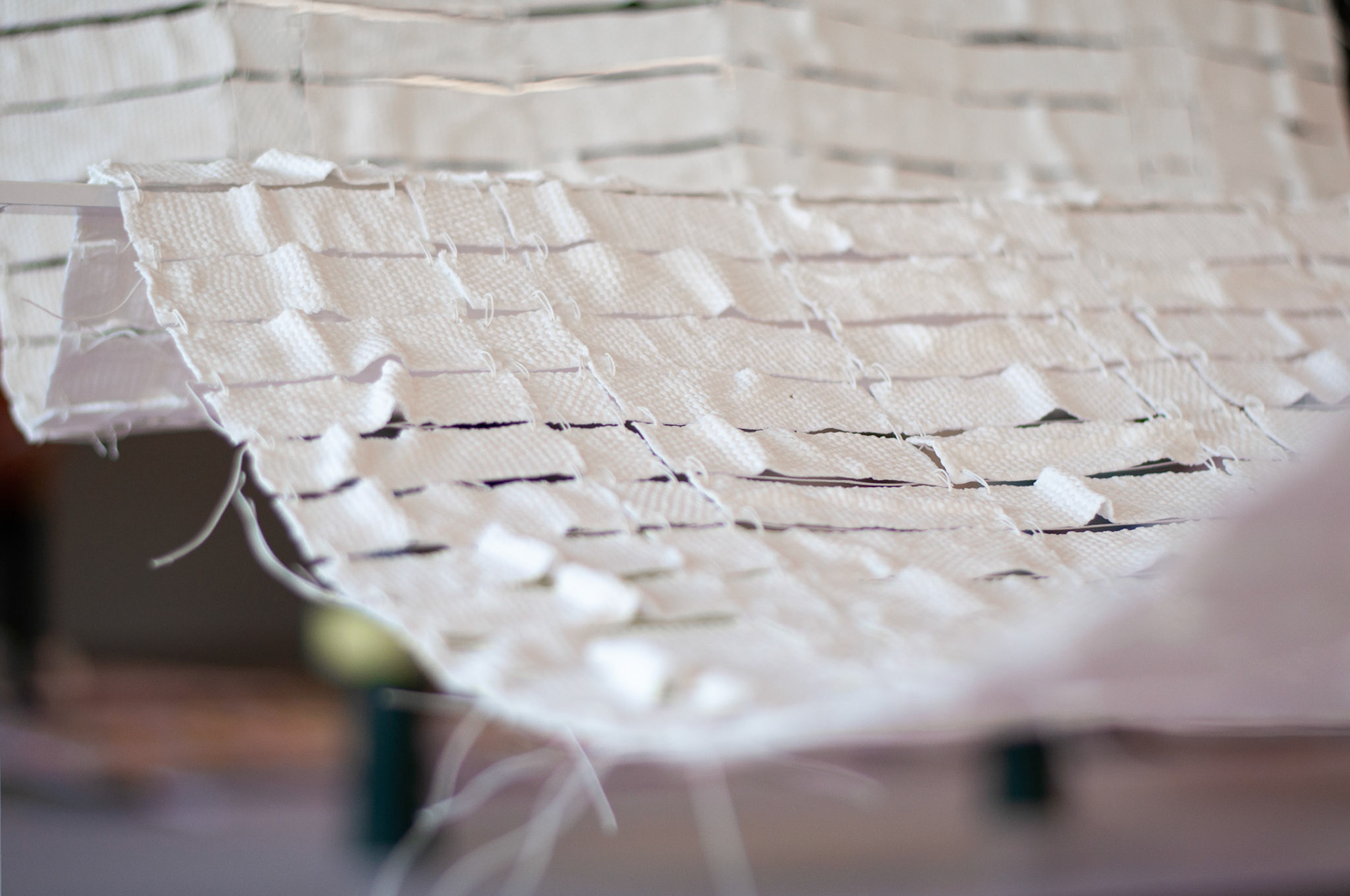
700 connected elements (re)created the fabric and became a memory of its former self.
